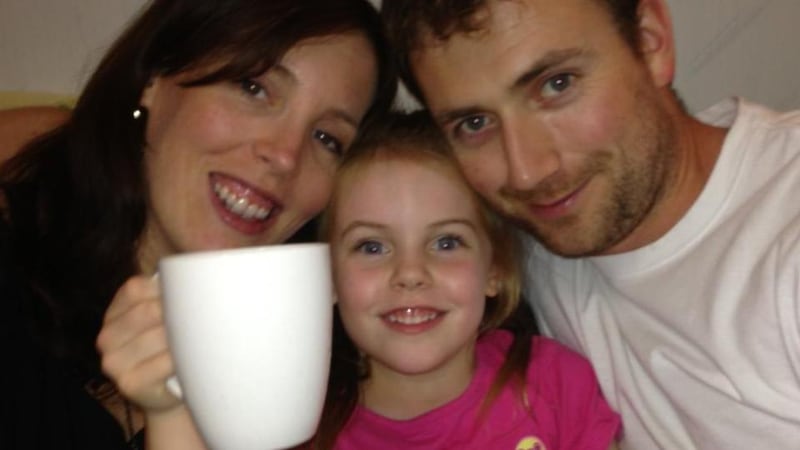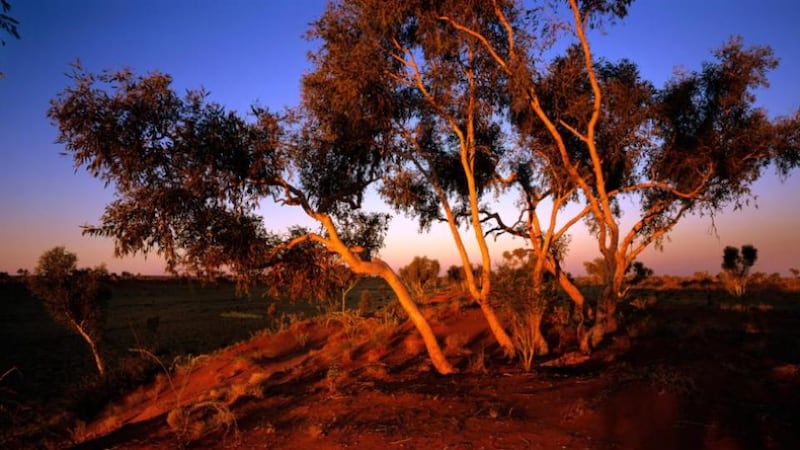From an Irish perspective, the resources boom in Western Australia couldn't have come at a better time. As tens of thousands of construction workers were being laid off here as the recession deepened in 2009-2010, the WA government was crying out for skilled tradesmen to fill chronic labour shortages which threatened the success of multibillion dollar mining projects in the state.
Armed with glossy brochures and promising lucrative salaries, Western Australia's former minister for training and workforce development, Peter Collier, embarked on a recruitment drive in Ireland in the summer of 2011, which has since resulted in thousands of Irish workers and their families uprooting to Perth and the surrounding areas to work in the region's mines and oil and gas fields.
Government efforts to provide manpower for the mines has led to a rapidly growing population, with an average of about 1,000 workers arriving from overseas every week last year. But the effort has been worth it. The resource sector overall has been worth more than $100 billion in Western Australia annually for the past three years.


The industry employs more than 100,000 people in the state, with tens of thousands more working in associated sectors such as construction and services.
Popular destination
As a result, the resource-rich region has overtaken New South Wales as the most popular destination for Irish workers on four-year employer-sponsored 457-visas, the majority of whom are travelling over to work in construction or mining. There were 4,160 Irish living in WA on 457s in June, more than half of whom had arrived in the previous 12 months. Carpenters and joiners are the biggest group, followed by civil engineers, project administrators, electricians, plumbers, architects and motor mechanics.
The majority are employed on a fly-in, fly-out (Fifo) basis, spending a few weeks on site in the regional location before flying back to an urban centre like Perth for a week or so where their family may be living.
Fifo contracts are so common now that more than 52,000 workers pass through Perth airport every week on their way to or from the mines. Employees and contractors are rewarded with considerably higher wages than they would be for city-based jobs, with flights and accommodation in specially built housing or work camps provided.
However, the six-figure salaries and long periods of leave come at a cost, especially for workers who are leaving a family behind them in Perth for weeks at a time, according to Donna Quinn of the Claddagh Association, which provides welfare support for Irish people in Western Australia.
"The conditions are tough. They work 12-hour days, live on campsites or in shared houses. They finish work, get on a bus to go back to the campsite, eat dinner, sleep, and get up to do it all again the next day, over and over until they get their week off. And it is hot up north in the mines, which are already hitting 40 degrees."
Counselling service
Being away from home can place huge strain on relationships and many employers now offer a counselling service for employees and their loved ones to help them to deal with the pressure of being separated for weeks at a time.
“Mum is left behind and she has to do everything. It can be very lonely,” Quinn says.
The Irish Families in Perth Facebook group, which now has more than 4,000 members, plays a hugely supportive role to Fifo families. Co-founder Eimear Beattie, whose husband is a shopfitter on a Fifo contract in the mines, estimates that about 30 per cent to 40 per cent of Irish families in Perth are in a similar situation.
“It works well for us, because we are really independent. The downside is he misses out on birthdays and events like that, but he Skypes every day. When he comes back, we are in holiday mode for the week and he spends all his time with our two daughters, much more than a typical working dad would,” she says.
“But I see so many people out here for whom it doesn’t work at all, and some have gone back to Ireland because of it,” she says. She adds: “People say, ‘Oh the poor mothers down here’, but it is hard for the men up in the mines. We have a network of support but they are on their own. They are exhausted when they come back down after two weeks’ solid work.”
An inquiry carried out by the Australian government into Fifo practices in regional areas, the findings of which were published earlier this year, heard evidence that one in three workers on Fifo contracts in Western Australia quits within a year. Attrition rates in some mining sites are even higher, depending on factors such as the standard of accommodation, camp life, frequency of flights, and the heat and dust levels, according to the Australian chamber of minerals and energy.
While the standard of accommodation provided for workers has improved dramatically in recent years, some unions have complained of a “prison camp” culture where strict staff rules border on demeaning, the Australian Sunday Times reported last year.
Restrictions are imposed on the number of beers they can drink per day, which are often served open so they can’t be stockpiled. Random drug and alcohol tests are frequently carried out for health and safety reasons, while mobile phones are forbidden on site.
For many young single people, the sacrifices are worth it for the salaries, but the report also mentions unhealthy lifestyles and high levels of drug and alcohol abuse by young Fifo workers during their time off, a factor Donna Quinn – who works with a youth organisation in Perth as well as Claddagh – also mentions.
The mining industry has declined significantly in the past 12 months or so as demand for resources from China has weakened, which is especially impacting on the labour market. Unemployment in the state has risen one percentage point to 4.9 per cent in the past year.
There have been reports in local media recently about Irish workers who have been laid off by mining employers with little notice. Those on employer- sponsored 457-visas are under pressure to secure another sponsored job within 28 days; otherwise they have to leave the country.
The Claddagh Association has seen a significant rise in the number of crisis cases where young men are arriving over expecting to find work in the mines but ending up in financial trouble.
“People are hearing that there’s a labour shortage here but there isn’t. It’s a skills shortage,” she says. “They come out thinking they can pick up labouring work as soon as they get off the plane, and get paid well, but they won’t. It can take months to find a job.”
But despite the slowdown, mining continues to offer employment opportunities for Irish workers with the right skills, according to Simon Winfield, a senior director with Hays Recruitment in the resources and mining sector. "There are still pockets of specific skill shortages, but mining companies are focusing on productivity," he says, stressing that employers are increasingly favouring temporary contractors over permanent workers.
Western Australia still has an estimated $248 billion worth of investment projects under way or about to begin. With many of the resource projects under construction, the focus will shift to residential construction to house the region's burgeoning population. This is likely to continue to provide strong employment opportunities for Irish workers.
The appeal of Perth: 'The benefits far outweigh the negatives'
After his construction-related business collapsed, Ronan Cranny (33) was out of full-time work for several months when he was offered a job as a heavy- duty fitter in an iron ore mine in Western Australia in 2010.
“Leaving Ireland was a big deal for us, as I had to complete six months’ work for the company before they would sponsor family members. It meant leaving my fiancee and four-year-old daughter behind,” he says.
“It was genuinely like a dream. My wife had lived and worked abroad before and I had travelled quite a bit so it appealed to us both. With the earnings potential in Australia, Caitriona could be a full-time mum for the first time in our daughter’s life.
“I am currently on a 14/7 roster – 14 days in work and seven days off, in a place called Koolyanobbing, an hour’s flight east of Perth. It means quite a bit of time away from home, but every third week is a holiday. I get up with my daughter and bring her to school, and then have the whole day to spend with my wife however we choose – go to the beach, shopping or just chilling out.
“Fifo work is quite hard but also enjoyable. You get to know your workmates very well as you live and work with them. There are good amenities and sports teams and clubs, a bar and a gym. The heat gets to everybody as it regularly hits 40 degrees and the flies are incredibly irritating.
“There is quite a big turnaround in guys coming here to work, as it is a huge shock to the system. We work 14 hours a day, 14 days in a row, day and night shifts before flying back to Perth. It can be exhausting, but for me, the benefits far outweigh the negatives. Aside from the money, the lifestyle here is beautiful. If I was to get a shorter roster, life would be very sweet indeed.”


















